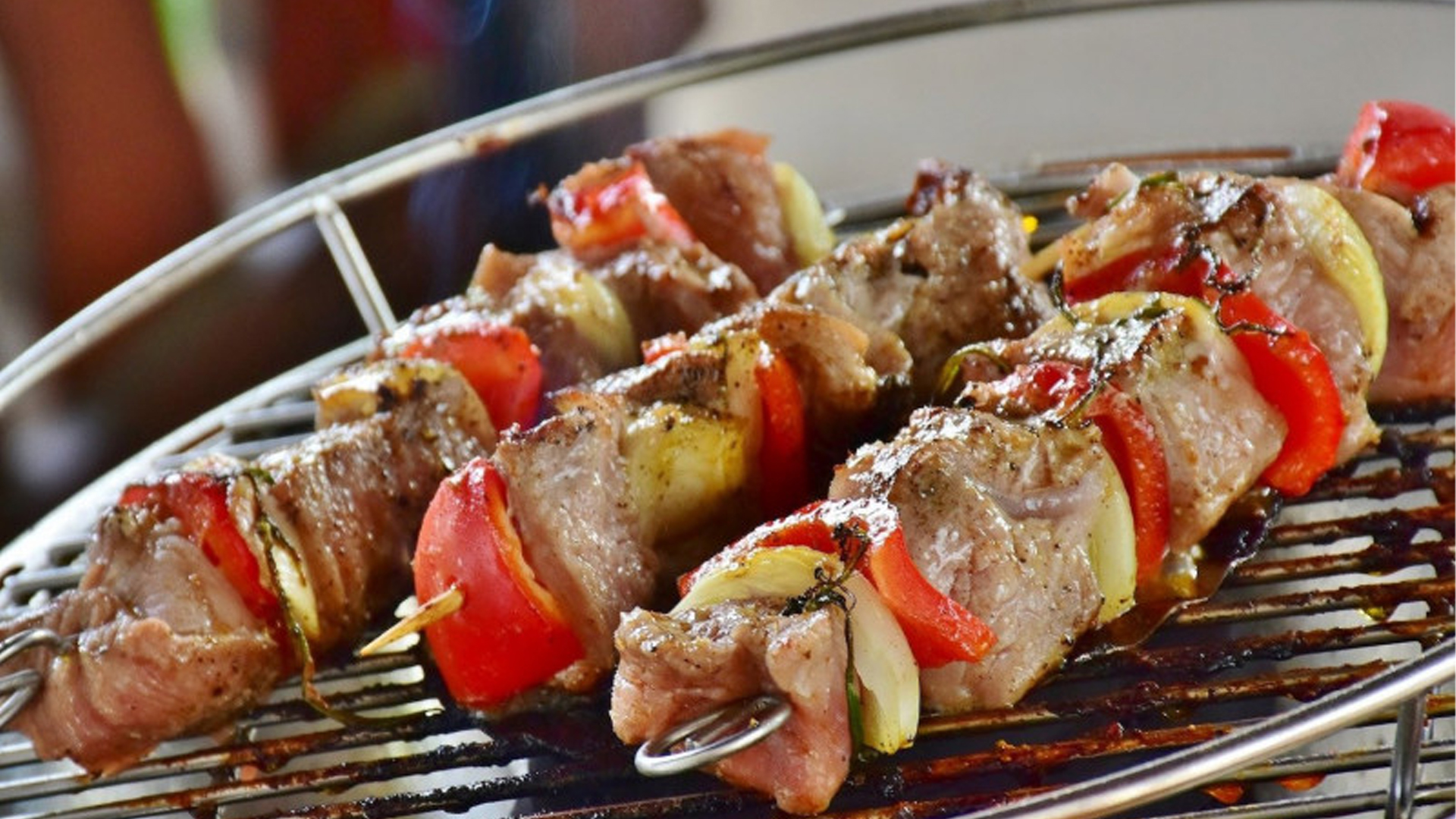Spiedini means “skewered” in Italian, and refers to foods that have been placed on a skewer and grilled over open coals. Lamb and mutton were common a century ago, but there are many regional varieties of this classic Italian barbecue dish.
Arrosticini - Spiedini all’Abruzzo

The mutton skewers were created in the mid-1930s by shepherds searching for a use for their older sheep. Lamb is a popular dish with a high market value, but milking sheep eventually stops producing milk and needs to be eaten. Unfortunately by then, the meat is tough, stringy, and less desirable for eating. Roasting the mutton over coals made the mutton tastier, and became a staple for the shepherds. The shepherds also served the roasted meat with slices of bread to make it more filling. Although skewered "spit-cooked" meat dates to the medieval period, arrosticini are a more modern creation and the inspiration for many of the more common versions available today as Italian street food.
Spiedie

These Italian heroes originated in Endicott, New York when Italian immigrants from Abrruzzo combined lamb skewers with Italian bread. The first Spiedie sandwich dates to the late-1930s, but has since grown into a regional food in the greater Binghamton, New York region. Today, you can find spiedie available in a variety of meats like pork, veal, and chicken. If you want to make these delicious sandwiches at home, America Domani’s secret for mouthwatering spiedie is marinating your meat with Reed’s Italian Marinade - the cayenne pepper adds an extra spicy kick!
Spiedini alla Romana
This roasted kebab is made from cheese and bread. Originating in the Lazio region outside of Rome, the simple dish was a cost-effective meal. Shepherds often stayed with their grazing flocks camping fireside to ward off poachers and predators. They would cook their foods over open campfires – a perfect way to cook a spiedini. Slices of bread are sandwiched together with mozzarella cheese and then skewered. Plenty of olive oil is drizzled over the spiedini before heading to the grill. The cheese melts while the bread toasts under the heat, and then it's typically served with more olive oil, capers, and sometimes anchovies.
Spiedini alla Siciliana
In the Sicilian recipe, thinly sliced meat is stuffed with Romano cheese and breadcrumbs. The meat is rolled together tightly, and coated in more breadcrumbs, and the skewer holds the little packets together while it cooks. Some variations will include nuts like pistachios, pine nuts, or almonds.
Kansas City Style Spiedini

The chicken spiedini was created by Garozzo's, a Kansas City, Missouri "red sauce" joint. The restaurant first opened in 1989 in Columbus Park, a historically Italian American neighborhood. Garaozzo created his original recipe in response to customers looking for less-filling dishes than the traditional Sicilian style spiedini he had been serving. He has since developed numerous recipes for the grilled chicken to be served over fettuccine including alfredo sauce, lemon juice, or diablo sauce.
Sausage and Pepper Spiedini

The classic Italian American street festival food is easily turned into a spiedini. Skewering sausages and peppers can help make the dish easier to eat and hold the pieces together.
Spiedini alla Marinara

Sometimes known as "the fisherman's skewer," this dish is typically a mix of available fresh seafood. Shrimp or prawns are commonly grilled with lemon and garlic, but swordfish and calamari also may be used. Fresh tomatoes and black pepper are common accompaniments.
Spiedini Marsala

Veal and chicken marsala are Italian American inventions created with sweet wine and mushrooms. Spiedini marsala is no different. The grilled skewer of veal or chicken is topped with a marsala-style sauce and mushrooms.
Ian MacAllen
Ian MacAllen is America Domani's Senior Correspondent and the author of Red Sauce: How Italian Food Became American. He is a writer, editor, and graphic designer living in Brooklyn. Connect with him at IanMacAllen.com or on Twitter @IanMacAllen.

